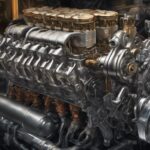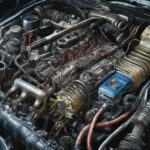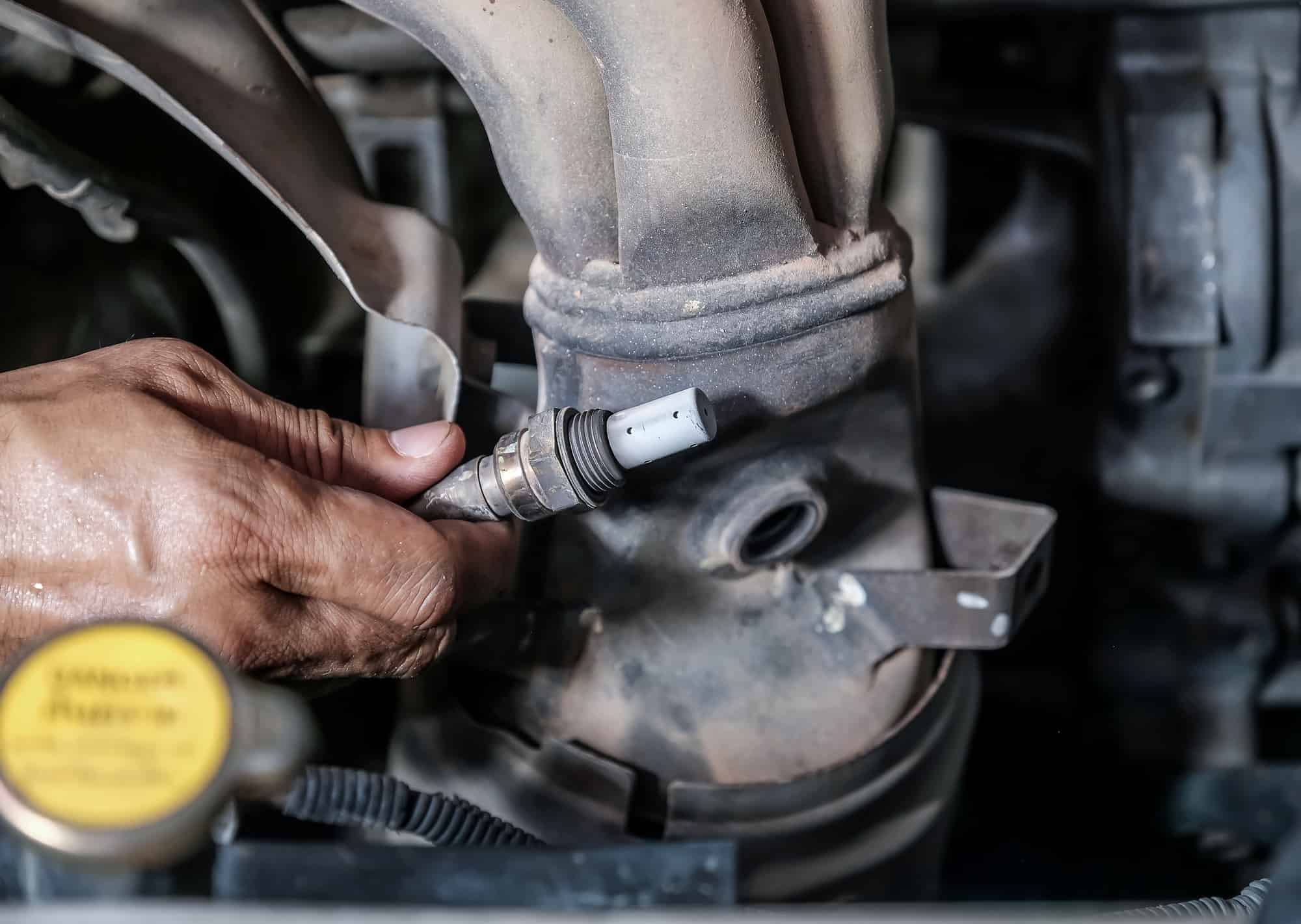What Does P0171 Mean?
When we encounter a P0171 or P0174 error code, these trouble codes indicate that our vehicle’s engine has detected a lean condition, which means there’s an imbalance between the air and fuel mixture. Specifically, there’s too much air for the amount of fuel being supplied to the engine. This can affect engine performance and emissions.
Bank 1 refers to the side of the engine where the first cylinder is located, and similarly, Bank 2 would affect the opposite side.
To pinpoint the cause, a code reader is plugged into the onboard diagnostics (OBD-II) port of the vehicle. It retrieves the error codes and supplies us with a starting point for our diagnosis:
| Error Code | Bank | Implication |
|---|---|---|
| P0171 | 1 | Too lean mixture |
| P0174 | 2 | Too lean mixture (other side) |
This initial diagnosis can then lead us to further inspect potential issues such as vacuum leaks, faulty oxygen sensors, or fuel delivery problems. By understanding these codes, we empower ourselves to tackle the root of the problem, or to communicate the issue more effectively if professional assistance is needed.
Diagnosing the Problem
When diagnosing the P0171 OBD-II Trouble Code for a system too lean in Bank 1, it’s essential for us to methodically examine several key components of the engine’s fuel and intake systems.
Firstly, an inspection of the intake manifold and vacuum hoses is crucial, as vacuum leaks are common culprits.
We use a vacuum gauge to measure and identify if the vacuum levels are within the normal range. Additionally, checking for intake leaks can be done with a smoke test, which reveals any hard-to-find leaks in the system.
Secondly, assessing the fuel system is vital. Inadequate fuel pressure can lead to a lean condition. We often use a fuel pressure gauge to ensure the fuel pump and fuel injectors are operating properly. If the fuel pressure is low, the problem might be with the fuel pump, a clogged fuel filter, or defective injectors.
The O2 sensor, or oxygen sensor, especially Sensor 1 (the upstream sensor), provides crucial data about the air/fuel ratio. If this sensor is faulty or contaminated, it can give incorrect readings. We use a multimeter to check the oxygen sensor’s functionality.
The MAF sensor, or Mass Air Flow sensor, plays a pivotal role in determining how much fuel is needed. If the MAF sensor is dirty or failing, it can cause an incorrect amount of air to be calculated, leading to a lean mixture. Cleaning or replacing the MAF sensor can sometimes resolve the issue.
We also review the ECM/PCM – the Engine Control Module or Powertrain Control Module for any signs of malfunction or necessary updates, including reviewing Technical Service Bulletins for known issues specific to the vehicle’s make and model.
Finally, running a comprehensive troubleshoot that includes all these checks helps us pinpoint the issue accurately, ensuring any repairs address the root cause of the P0171 trouble code effectively.
Symptoms and Severity
When diagnosing a P0171 OBD-II trouble code, we are dealing with a lean condition in Bank 1. This means there is an imbalance in the air-to-fuel ratio, specifically too much air and not enough fuel. Here are the symptoms we often encounter:
- Rough idle: The engine may run unevenly or shake while idling.
- Misfire: An engine misfire may occur, leading to jerky acceleration.
- Stalling: The vehicle may stall during operation due to an inadequate fuel supply.
- Loss of power: Drivers might experience a noticeable lack of power during acceleration.
In terms of severity, it is crucial to address a P0171 code promptly. Letting this condition persist can lead to more serious issues, including:
- Engine damage: A lean mixture can cause higher combustion temperatures, potentially damaging the engine over time.
- Catalytic converter: Extended lean operation may cause damage to the catalytic converter, which can be a costly repair.
We should also pay attention to fuel trim values as they provide insights into the extent of the lean condition. Positive fuel trim percentages indicate that the engine’s control unit is adding more fuel, trying to compensate for the lean state.
Understanding the difference between Bank 1 and Bank 2 is important for a proper diagnosis. Vehicles with a V configuration will have two cylinder banks, with Bank 1 referring to the side with the first cylinder. The P0171 affects only Bank 1. If there were issues with both banks, we might expect to see a P0174 code as well.
Addressing a P0171 code should be considered a priority to prevent potential stalling, reduced vehicle performance, and expensive engine or catalytic converter damage.
Are Lean and Rich Fuel Trim Codes Related?
The fixing post catalyst fuel trim system refers to the system that adjusts the air-fuel mixture for efficient combustion. Lean and rich fuel trim codes can indicate issues with this system, affecting engine performance. It’s important to address these codes promptly to ensure smooth operation and prevent potential damage to the vehicle.
How Can Distributor Cap Failure Lead to a Lean Engine Code (P0171)?
When experiencing distributor cap failure symptoms, it can lead to a lean engine code (P0171). This is due to the cap’s deteriorating condition, causing misfires and unburned fuel in the exhaust. The resulting imbalance in the air-fuel mixture triggers the lean code, indicating a potential issue with the distributor cap.
Repair and Maintenance
When dealing with a P0171 code, indicative of a lean fuel mixture in bank 1 of the engine, there are specific repairs that we can consider to resolve the problem.
First, we must inspect the air filter and replace it if it is dirty or clogged. A clean air filter is essential for maintaining the correct air-to-fuel ratio.
Next, let’s check the fuel filter. A clogged fuel filter can restrict fuel flow, leading to a lean mixture. Replacing a dirty fuel filter is a relatively simple but critical task.
The fuel injectors should be examined for clogs and damage. Cleaning or replacing clogged fuel injectors can often resolve a lean mixture issue.
We must also evaluate the fuel pressure regulator. A faulty fuel pressure regulator can cause a drop in fuel pressure, resulting in a lean condition. Replacement may be necessary if it’s defective.
Looking beyond the fuel system, a common cause of a P0171 code is a vacuum leak. Inspecting vacuum lines, intake manifold gaskets, and the PCV valve is vital. Repairing any leaks we find here can often fix the problem.
It’s common to encounter an exhaust leak or a malfunctioning catalytic converter. Both can trigger a P0171 code due to incorrect readings of exhaust gases.
If the issue stems from the engine’s electronic sensors, a faulty mass air flow sensor or coolant temperature sensor might be to blame. We’ll either clean or replace these sensors as needed.
Finally, consulting repair manuals can provide vehicle-specific guidance, including torque specifications for items like intake manifold gaskets and diagnostic procedures for the EGR valve.
We perform these repairs methodically, ensuring that each potential issue is addressed. A systematic approach helps prevent common problems such as misfires and spark knock, restoring the engine’s efficiency and performance.
Cost Considerations
When we encounter the P0171 error code, the precise costs will vary depending on the nature of the problem and the type of vehicle we have, but here is a general breakdown for common issues associated with the P0171 code:
Diagnosis:
- Mechanic’s Fee: The initial step is to diagnose the exact cause of the lean condition. This fee typically ranges from $75 to $150.
Common Repairs:
- Vacuum Leak: Locating and repairing a vacuum leak could cost us between $100 and $400.
- Fuel Injector Service: Cleaning or replacing fuel injectors might cost anywhere from $150 to $500.
- Fuel Pump Replacement: If the fuel pump is at fault, we could be looking at $220 to $1,020.
- PCV Valve Replacement: This more minor repair usually costs between $25 and $100.
- Exhaust Leak Repair: Fixing an exhaust leak can range from $100 to $400, depending on the severity.
- Intake Manifold Gasket: Replacing an intake manifold gasket may cost from $150 to $350.
It’s worth noting that labor plays a significant role in the costs, as experienced mechanics will often charge higher rates. Moreover, the make and model of our vehicle can influence both the accessibility of the issue and the price of replacement parts. Here’s a simple table to summarize potential costs:
| Repair Needed | Estimated Cost Range |
|---|---|
| Diagnostic Fee | $75 – $150 |
| Vacuum Leak Repair | $100 – $400 |
| Fuel Injector | $150 – $500 |
| Fuel Pump Replacement | $220 – $1,020 |
| PCV Valve Replacement | $25 – $100 |
| Exhaust Leak Repair | $100 – $400 |
| Intake Manifold Gasket | $150 – $350 |







I’ve been seeing symptoms like rough idle and loss of power in my car, which made me think it’s related to what you’re describing. Could a faulty MAF sensor be the root cause of these symptoms even if my check engine light hasn’t turned on yet?
I’ve been trying to work through a rough idle and lack of power in my car. After reading a bit, it sounds like it might be related to the issues you described with a lean air to fuel ratio. Could a faulty oxygen sensor be the primary cause of these symptoms, and is it something I can diagnose on my own with basic tools?